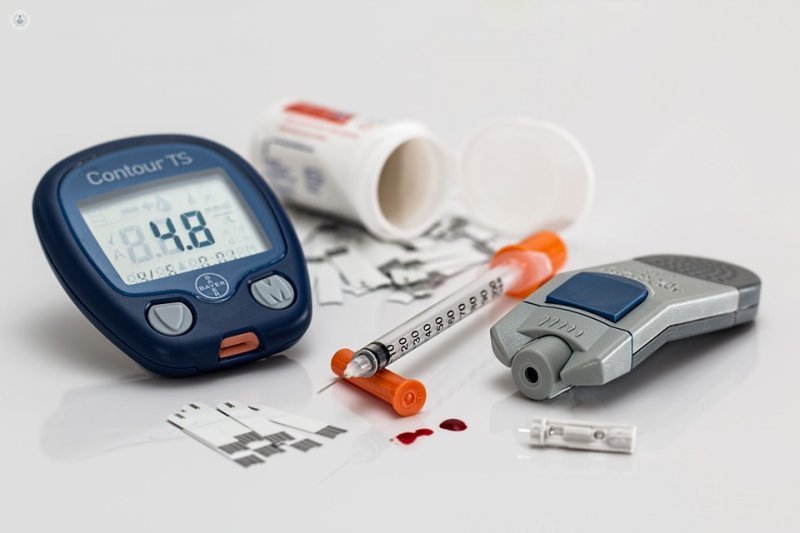Four key points diabetic foot
Written by:It is estimated that 375 million people worldwide suffer from diabetes, a chronic condition that is triggered when the body loses its ability to produce enough insulin or use it effectively. Its incidence is increasing and currently 50% of cases are undiagnosed. One of the main more frequent, severe and disabling consequences is diabetic foot.
 Types of patients manifesting
Types of patients manifesting
The diabetic foot is an infection of the blood vessels and nerves in the foot that usually occurs in people with advanced Type 2 diabetes or a disease of long evolution. Its appearance occurs at any age, but often occurs in later life, a fact that hinder their treatment and cure. It usually manifests with ulcers as a cause of the following factors:
- Macroangiopathy and its relationship to other vascular risk factors such as snuff, hypertension, hepatic lipase (HL) and physical inactivity.
- Microangiopathy: difficulty in wound healing.
- Neuropathy: loss of sensation. Patients are unaware of the position of the foot or pain, a fact that complicates the evolution of wounds, especially in cases of long evolution. Currently there is no relationship between the incidence of disease and care of the disease by the patient, but it is true that complications arising from diabetic foot are catastrophic in patients who do not control blood sugar levels and not maintaining measures basic hygiene.
- Arthropathy (Charcot): weakening of the bones of the foot at risk to fracture or even to have to amputate. As the disease progresses, the dome collapses.
Treatment of diabetic foot
When a patient has diabetic foot is advisable to address the disease from different areas. This multidisciplinary approach will provide a comprehensive and adequate treatment to the needs of each patient based on their injuries. Thus, a guarantee is achieved and the risk is avoided to suffer major amputations and healing successfully ensures many related injuries. Advances regarding treatment and new approaches in dealing with this disease have reduced the number of amputations for 10% of cases.
To alleviate this disease, they carried out different treatments:
- Wound care. Clinicians should explain how the patient and perform a weekly or daily control.
- It is important to diagnose the infection and recommend a specific antibiotic.
- Conduct a comprehensive study of the vascular status of the limb and, if necessary, revascularization by endovascular catheters or bypass techniques.
- corrective techniques foot deformities as change supports or orthotics.
- Strict glycemic control since in situations of infection, it tends to spin out of control.
- trauma surgery for specific cases.
- minor amputations
Advances in the treatment of diabetic foot
In recent years it has been discovered that hyperbaric chamber is, in addition to other conditions, very effective in patients with diabetic foot. It is not a healing or miracle treatment, but it represents a very important aid. Research has shown that increasing the oxygen concentration in infected areas or open wounds accelerates the healing process significantly and quickly and safely is breathing O 2 at high pressures for an hour a day in a hyperbaric chamber.
Among its advantages are that involves no contraindications or side effects for the patient and the principal, decreases pain. The specialist will establish the recommended number of sessions and supervise cures the wounds.
Another development that has occurred is the introduction of endovascular techniques to open arteries and allow greater blood flow to wounds. Thanks to this innovation has significantly improved the prognosis of the disease with minimal risk and easy recovery.
Tips for treating diabetic foot
Experts in Vascular Surgery advise taking common sense measures and to maintain basic hygiene routines care and diabetic foot:
- daily foot inspection
- Strict nail care
- daily hygiene
- Good choice of footwear
- Do not wear new shoes for a long time followed
- Avoid intense heat
- Go to a specialist when it appears in doubt or injury



